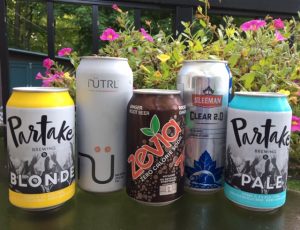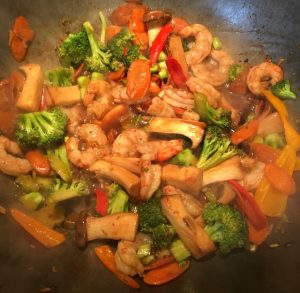With apologies to Shakespeare…
Happy New Year! I’m glad to say goodbye to 2019 and look ahead to 2020. This year is my 60th – a milestone made more memorable by my recent cancer journey and by the fact that my mother never lived to celebrate her 60th. She died three days before her 55th birthday of end-stage metastatic breast cancer that she had carried for 10 years.
I’m determined to make 2020 a kickass year – a year long project called Martha 6.0. This involves several major goals, one of which is to get my book published. That means that I have to buckle down and write it… January’s goal is to write every day. My manuscript has about 24,000 words so far, on its way to about 60,000.
So, I’m taking a few excepts from my manuscript and publishing them here as blog posts – little tasters, if you will, of the longer book to come. Powerful Beyond Measure (its working title for now) will be a combination of my story, explanation of the metabolic nature of cancer, how that impacts on interventions, and the nutritional and lifestyle strategies that can help cancer patients to have an impact on their own response to cancer and its treatment modalities. It will also be a quick guide to a ketogenic diet and include a few recipes that make implementation of the diet easier. And a full explanation and protocol for fasting. I will also address the psychological, emotional and spiritual aspects of my journey, with suggestions for how to keep your head above water as the cancer process proceeds.
So, here’s a little chunk that I wrote today. It’s about snacking on a Keto diet.
The truth about snacking:
How many times a day you eat is entirely up to you but realize that snacking is always an emotional event and that when you are experiencing true body hunger, you should eat a satisfying meal. That’s a goal, not necessarily where you start. In the beginning, have lots of great keto-compliant snacks around to help you through the tough times. This will include meat-based snacks, savoury/salty snacks, crunchy snacks and sweet items for snacks or desserts.
I used to be a big fan of fat bombs and pork rinds, cheese “crackers” and “keto-fied” baking. Over time, however, I have really let all those things go, as I need much less in the way of snack items to get me through the day. Practicing time-restricted eating helps with that for sure. Having a low carb cookie or cheesecake dessert recipe in your back pocket is great when you get invited to someone’s house for supper, or to a potluck, but shouldn’t be part of your everyday eating in the long term.
Start by doing a deeply honest look at what kind of snacking really satisfies you and what part of you is really being satisfied. Are you a stress eater? A boredom eater? Are you having “mouth hunger”, “heart hunger”, or true stomach hunger? Are you an opportunistic snacker, vulnerable to every environmental cue or trigger that crosses your path?
What kind of snacks feed your soul as well as your body? Do you have a sweet tooth, a salty tooth or possibly a creamy tooth? Do foods with umami (the earthy richness of cheeses or meats or mushrooms) satisfy you? Understanding the WHY of your snacking habit or food addiction is the first step in addressing it. Addressing these issues can be hard, as they require honest introspection without self-guilt or blame, just acknowledgement of your needs and coping strategies.
Once you have an awareness of the WHY of your snacking, you can honestly acknowledge what it is that you are really feeling (boredom, anxiety, stress, neglect, lack of self-esteem), and that’s the first step in addressing your real needs in a non-food way. Remember that all learned addictive/out-of-control behaviors are coping strategies that have benefited you in some way in the past. They might no longer be serving your needs, but they were important in your past. As such, they can be acknowledged and thanked, but then be released without being acted on. That’s harder to do than it is to write…
Ideally, the best eating pattern is one of feasting and fasting, meaning that you eat a big enough meal of the right foods to provide satiety for hours, then fast until you are really ready (stomach/body hunger) for the next meal, then repeat. Undereating calories at every meal is a sure recipe for disaster – you are not satiated and hence looking for snacks in an hour or two. Eating a meal based on protein, healthy fats and adequate micronutrients provides your body with true satiety, a full feeling in your belly without bloating or pain, and a peaceful lack of interest in continuing to eat. That feeling can last for hours – it’s liberating! And quite a revelation for those who have never experienced freedom from food thoughts and cravings.
More to come in the next few weeks…



